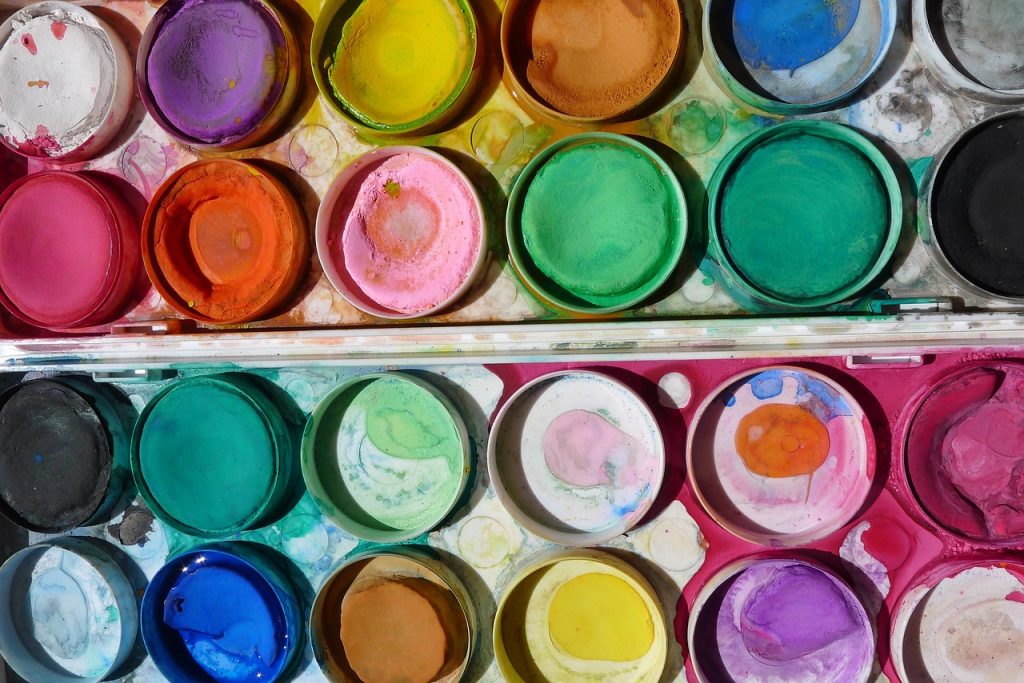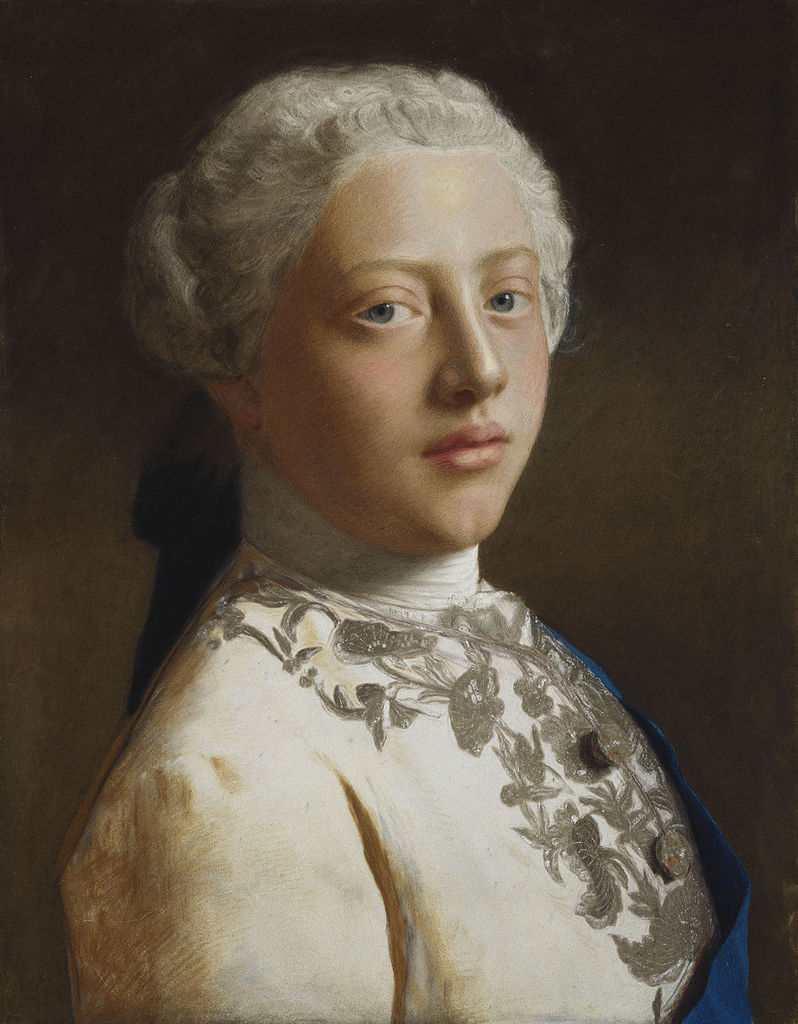3.4 Colour systems: pigments and dyes

The development, mixing and use of pigments and dyes throughout history, across all cultures, is an important part of understanding colour theory. From early human use of natural pigments made from ochres in the earth to synthetic colours developed in science labs, there are many interesting stories behind the colours we know and use today.
This section has information about where pigments and dyes come from, how they were developed, and how you can use them in your creative practice.
What’s the difference between a pigment and a dye?
Pigments and dyes are the main types of colour materials (colourants) we use in art and design, and also in science and industry. A simple way to identify whether a colour material is a pigment or a dye is whether it is soluble or not:
- pigments are insoluble colourants – which means they can’t be dissolved in water and are usually held together in some kind of “binder”, which could be a liquid medium like oil, acrylic emulsion, or gum arabic, or formed into solid materials like pastels or pencils.
- dyes are soluble colourants – which means they can be dissolved in water. This is usually because the particles of a dye are much smaller than a pigment. A dye will chemically bond with the material it is absorbed into – like dyeing hair or fabric, and usually requires some kind of fixative called a “mordant” to help bind the dye to the material.
Pigments tend to sit on top of the materials they colour – like paint on a canvas. Some traditional painting methods also included Tempera – which used egg yolk as the medium for ground pigments – or fresco painting, where pigments were mixed with water and applied to wet plaster.
Many pigments are made from inorganic substances like rocks and minerals, whereas many dyes are made from organic substances like plants or insects, but there are exceptions to this rule. Most artists’ paints are made from pigments, but inks can be made from either pigments or dyes. Inks can have different binders like shellac, acrylic emulsion or gum arabic.
Pigments usually hold their colour (colourfastness) better than dyes and don’t fade as quickly in ultraviolet or visible sunlight (lightfastness). Have you ever had a carpet or curtains that partially faded in the areas that were exposed to the sun every day? Ultraviolet light can break the chemical bonds in coloured materials, which leads to fading over time. Some pigments are more lightfast than others. Some pigment and dye colours are called fugitive because they fade quickly – like the organic pigment madder lake.
The lightfastness of coloured pigments was an area of experimentation for artists as early as the Renaissance, who noticed that certain pigment colours they were using in their paintings changed over time. Some colours faded from sunlight or got darker due to changes in the pigment structure. Some artists compensated for how colours would change over time by painting with very bright colours that they knew would fade or darken over time.
The image in Figure 3.32 shows how pigments can fade over time. The pigment used for the Prince’s coat in this painting was originally bright red. It has faded due to light exposure for over 260 years. The other colours used remain closer to their original vibrance.

Modern artists’ paints today are generally more lightfast than early artists’ pigments, thanks to research and experimentation by paint makers, but not many would be completely lightfast. That is why you might see valuable artworks in galleries and museums kept under special lighting conditions to minimise fading.
Read the following sections of this chapter to learn about the history and practical applications of paint pigments and dyes.
This section covers the following topics:

